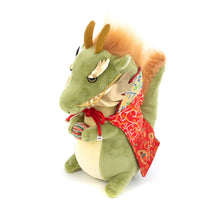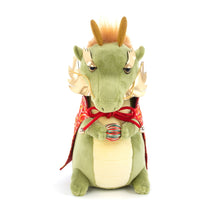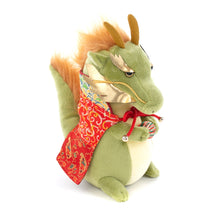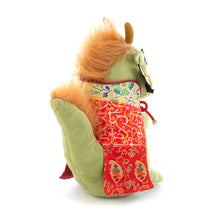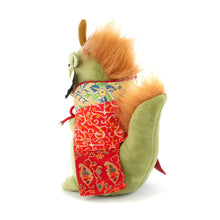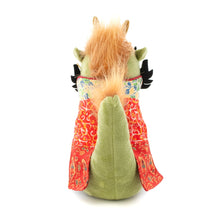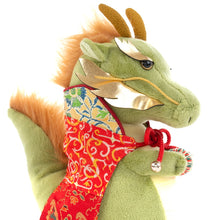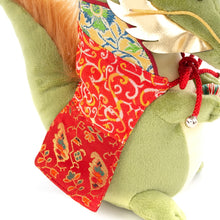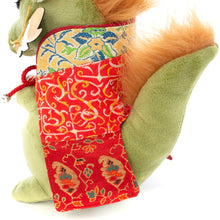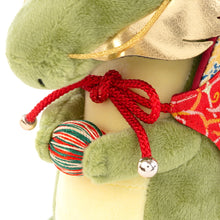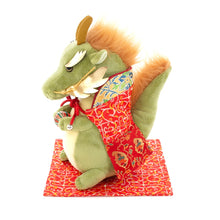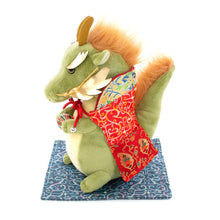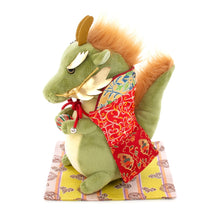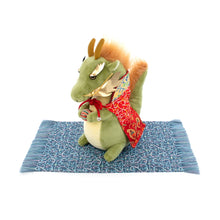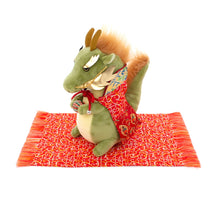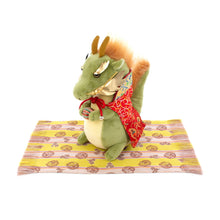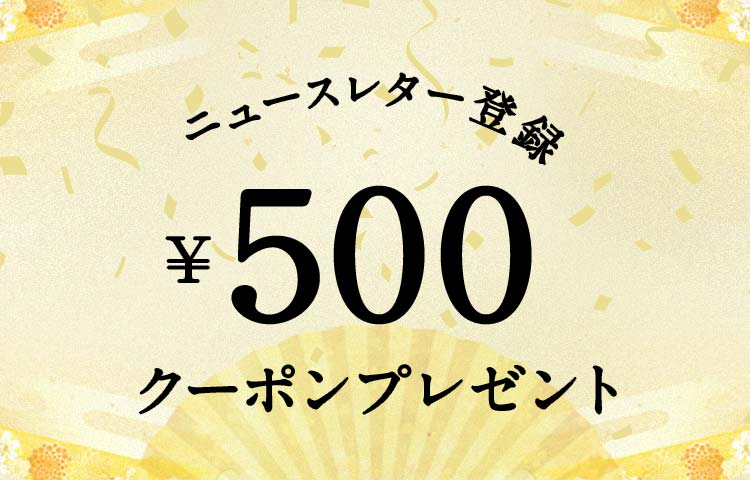
*The pattern may be different from the image shown due to the cutting process
Detail
| Product : | Oriental Zodiac Sign "Dragon" Mascot Doll |
|---|---|
| Type : | 人形 |
| Size (cm) : | H approx. 19.0 x W approx. 18.0 x D approx. 8.5 |
| Tags : | Mascot Doll、 Wrapping available、 Oriental Zodiac、 Pattern: Zuiryu (dragon)、 Dragon、 dragon、 |
| Other : | The pattern may be different from the image shown due to the cutting process. Please understand this in advance. |
| Other : | Gift wrapping service available |
Reviews
Description
Tatsumura Bijutsu Orimono's Oriental Zodiac Dolls are made with a wish to ward off bad luck and bring good fortune in the New Year. This doll is a popular item for which Tatsumura Bijutsu Orimono receives many orders every year. The doll's upper garment has a graceful and auspicious design with a new pattern "Zuiryu chuishu design" on the body, "Soun-ji Bundai-gire" on the collar, and "Omoide" on the hem. We hope you will display the zodiac "dragon" mascot doll, a symbol that brings happiness, at your home, office, or any other places as you welcome the New Year.
Patterns
The high level of technology and perfection of Chinese dyed textiles strongly influenced the countries around it. This piece was produced using dragon embroidery as a model from among the many dyed and woven textiles found in Chuzhou (present-day Hubei Province), the center of production in China.
The geometric composition of dragons, branches of flowers, and vines forming a rectangle as vertical and horizontal lines, which was characteristic of the embroidery patterns of the time, is utilized in this arrangement so that the dragons stand out.
The dragon, one of China's most prized designs and an auspicious symbol of the prosperity of the court and marital bliss, is expressed through the technique of sutra brocade. (Unauthorized reproduction and reprinting)
Collar decoration of upper garment: Sounji-bundai-sheri
The Sounji tithe collection in Hakone includes a bundai and an inkstone box, which were the favorite possessions of Sogi, a leading scholar of classics and renga poetry in the Muromachi period (1336-1573). The original of this piece is attached to the writing stand and inkstone box, and is made of silver brocade with the ground covered with silver foil and woven with green, ebicha, and light red threads in a composition of petal-like flowers in a vine arabesque pattern.
The exquisite harmony between the austerity and luxury of this fabric was not lost, but modern ingenuity was added to the weaving process. (Reproduction in whole or in part without permission)
Upper garment and lower garment: Omoide
In India, flowers, fruits, and trees sprouting in the desolate land have been considered sacred since ancient times, and date palm shoots have also been handed down as a stylized paisley pattern.
The pattern was sublimated into a textile in Europe in the early 19th century, amid a longing for the Orient, and was widely appreciated. Taking a cue from this pattern, a new pattern was created and woven into a gorgeous brocade. (Reproduced without permission)
Zui-ryu Soshuu-mon(Liu Design in Embroidery)

The textile fabrics made in ancient China, centering in the State of Chu (11C-3C, BC) (present Hubei) influenced on the nearby countries by the quality perfection and the high technology of the fabrics.
The design of this brocade is modeled after one of the embroidery patterns in those textiles. We newly designed a geometrical pattern of "Chinese Liu" surrounded by the vines of stems and flowers spreading vertically and horizontally, so that the "Liu" looks active.
The "Liu" design, one of the most valued good omen in China, symbolizing the rise of the Imperial Court and the happy wedding, is woven into warp-patterned brocade by our exquisite weaving technique.
















